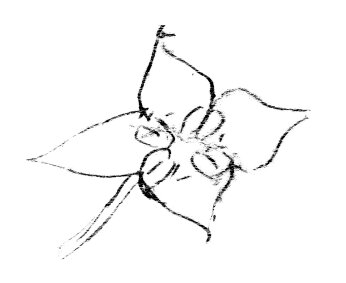From William Kencely Bridgman to John Gwyn Jeffreys [before 21 January 1869]1
Norwich
⟨ ⟩
My Dear Sir
Thank you very much indeed for the Autograph— it is curious how often with great thinkers the fingers reveal their inability to keep pace with their “Copy” it is just the style of writing I should have expected.
With respect to the minor tetraodons2 my Son made one expedition after them some time back but very few were obtainable— the waters were high & the current ⟨ ⟩ that at present it was useless— When the water is low in the summer is the time when they may be had in abundance & I will endeavour then D V not to forget them
Yours faithfully | W K Bridgman
J G Jeffreys Esq
Mr Darwin has told us lots about fertilization by insects but I think I have just made a curious discovery which I don’t remember ever to have seen noticed— Gardening is one of my recreations & last year I procured some Aucubas ⟨ ⟩ from Standish but not succeeding with it I procured ⟨ ⟩ male plants to save my own this year—3 [well] ⟨ ⟩ ⟨t⟩hese is now in flower & I have it in my office to ⟨ ⟩ ⟨un⟩der close inspection— I have cut over 100 flowers ⟨I obser⟩ved that after the anthers began to burst a drop ⟨ ⟩ made its appearance on the disc enclosed by ⟨ ⟩ ⟨s⟩tamens— I at first thought it was from over ⟨ ⟩or excess of moisture in the plant but a moment’s reflection showed me that it was honey from the nectaries & the object became at once apparent— the Aucuba is Diœcious & consequently the pollen has to be specially carried to the female flowers which are very inconspicuous— the honey appears only when the pol⟨len⟩ is ready— the bee cannot get it without rubbing its head ⟨&⟩ proboscis over the pollen— it is curious that no honey appears
 until the anthers begin to burst— apparently lest it should be carried off before the pollen is ripe— now does this occur with the fuchsia &c? & does the Bee know of honey being there by ⟨th⟩e state of the anthers?— is this new? | WKB
until the anthers begin to burst— apparently lest it should be carried off before the pollen is ripe— now does this occur with the fuchsia &c? & does the Bee know of honey being there by ⟨th⟩e state of the anthers?— is this new? | WKB
CD annotations
Footnotes
Bibliography
ODNB: Oxford dictionary of national biography: from the earliest times to the year 2000. (Revised edition.) Edited by H. C. G. Matthew and Brian Harrison. 60 vols. and index. Oxford: Oxford University Press. 2004.
Shephard, Sue. 2003. Seeds of fortune: a gardening dynasty. London: Bloomsbury.
Summary
Gives observations on the coincidence of nectar secretion and the opening of the anthers in Aucuba.
Letter details
- Letter no.
- DCP-LETT-6562
- From
- William Kencely Bridgman
- To
- John Gwyn Jeffreys
- Sent from
- Norwich
- Source of text
- DAR 160: 306
- Physical description
- ALS 4pp damaged † (by CD)
Please cite as
Darwin Correspondence Project, “Letter no. 6562,” accessed on 14 May 2024, https://www.darwinproject.ac.uk/letter/?docId=letters/DCP-LETT-6562.xml
Also published in The Correspondence of Charles Darwin, vol. 17


